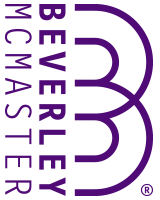You know the quote, the one where the CFO asks the CEO what happens if after investing in their people they then leave the business and the CEO replies, what happens if we don’t.
This isn’t a blog post about the stereotypical perception of CFO’s and CEO’s but rather how to go about making sure that you get the investment you need in your career - and specifically coaching investment.
These days there is much more awareness about what Executive coaching can deliver when offered by a professionally trained and experienced coach. Coaching is used by organisations in a host of different ways, not always for the positive but increasingly it’s being seen as a vital development intervention to help already successful C suite Execs broaden the impact they can have across their business.
What happens however if you are not a C suite Exec but you think you’d like some coaching this year? How do you go about persuading your employer that you should be considered for such an investment?
Firstly check out company policy - written and unwritten. Is there a policy? Has coaching been used before and if so for whom - are you likely to be breaking new ground with your request or has the ground already been cracked?
Then Build your Business Case.
Know why you want to engage with a coach. Be clear on your desired outcomes. What do you need to grow for yourself in relation to your current and future contribution in the business? What will you be able to do with more confidence and/or competence at the end of the coaching engagement?
Consider a possible ROI for coaching. This is a tough one especially when the coaching is in the domain of vital soft skills for getting things done with and through others. It can be hard to quantify the exact financial impact off coaching on the business. Look at the metrics used to measure your performance anyway including those that are employee related such as engagement and retention.
Provide examples of how previous investment in you has paid off. How did you put the investment to good use in your direct role and perhaps more widely across the business?
Link coaching to your career progression - vertically or horizontally - within the business. How will it help you?
Compare coaching with other investment alternatives. Coaching is unique in that it provides provides personalised support, tailored just for you and the outcomes you seek. It’s impossible to compare it with an MBA for example, but consider what the coaching investment might equate to in terms of other types of development opportunities.
Anticipate possible objections and how you might respond. An objection that often comes up is that coaching, because it can be a significant investment, is often only offered to very senior employees. The wider the scope for impact in the business, the easier it is to justify the higher level of investment. I know of businesses that are worried about opening the flood gates if they include a wider population. Think about how you might respond to that, perhaps relying on the uniqueness of your case, the business case that you have put together for why your employer should invest in you. Each case on its merits perhaps.
Talk with your boss. A key feature of successful coaching assignments is line manager sponsorship and support. This is clearly vital if you need HR approval, and also because your line manager will have a view on the necessary outcomes, as well as being able to offer you support when you need it. Be ready to talk through you business case with your boss, and if HR does need to sign off, get him or her actively engaged in building the case for WHY and YES.
Prepare Yourself The can often the big one: you may need to do some work around mindset here. Asking for financial investment in your future with the organisation can be a bit like asking for a salary increase or discussing a promotion. Some people will find this easier than others. Remember this; you bring value to your business already and will continue to do so. You are inviting your organisation to invest in you for the future. It’s a simple invitation posed as a request. No more than that. Let me know if you need help with making requests and or accepting a ‘no’.










